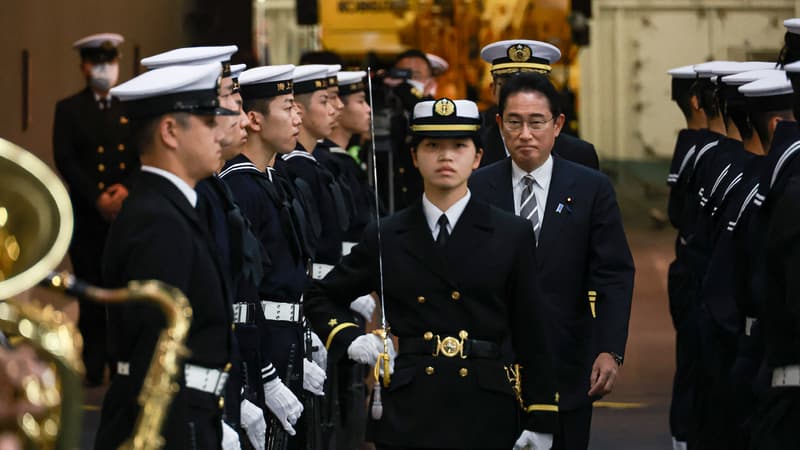Chinese ambitions in the Asia-Pacific, the proliferation of missile launches from North Korea, but also the Russian invasion of Ukraine are prompting Tokyo to thoroughly review its defense doctrine. Details of this new strategy will be released at the end of the week.
We already know some elements of the new strategy. Tokyo intends to double its defense budget, increasing it from 1% to 2% of its GDP, as NATO member countries have done. Your command will be consolidated and the range of your missiles will be increased.
A peaceful military power
This is an important change for this country whose pacifist Constitution, adopted the day after its defeat at the end of World War II, prohibits it in principle from having a real army. And today, Japan no longer feels that Washington’s protection guaranteed by the Japan-US Security Treaty is no longer sufficient.
Above all, Japan wants to underline its adherence to a strategy based on “self-defense” and its desire not to become a “military power” in accordance with the Constitution. It intends to acquire a “counterattack capacity” to be able to attack targets that threaten the archipelago from neighboring countries, even preventively.
An airplane of the future with the United Kingdom and Italy
As part of this new strategy, Tokyo wants to procure up to 500 American Tomahawk cruise missiles and triple the anti-ballistic missile batteries based on the islands closest to Taiwan and thus China. He also plans to build a hundred ammunition depots and launch satellites to better guide his possible future return attacks.
Finally, Japan made official a few days ago its intention to develop with the United Kingdom, Italy and Sweden the Tempest, the air combat system that competes with the European Scaf. Currently, Japanese aviation is made up of American aircraft. In 2019, an order for 105 F-35 fighters was placed.
Details about the cost and role distribution of the Tempest program have not yet been finalized. Production should start around 2030 or 2031 in order to deploy a demonstrator by 2035.
The Japanese Mitsubishi Heavy Industries, the British BAE Systems and the Italian Leonardo should be at the center of the project, according to information from the Japanese economic daily Nikkei.
This new doctrine could irritate Beijing, which regularly alludes to the brutal Japanese militarism of the first half of the 20th century, of which China was one of the victims.
Source: BFM TV


